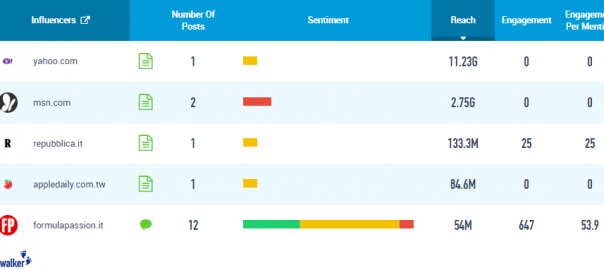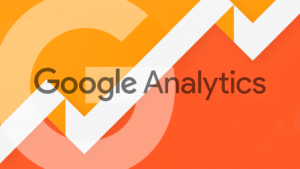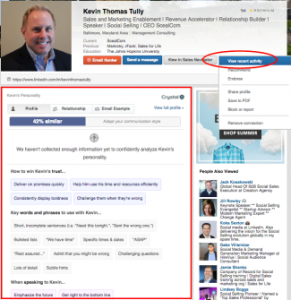
Corporate spending on sponsorship activity will hit 60 billion dollars in 2016.
But despite this vast expenditure, measuring the ROI of sponsorship remains a tricky business, especially with social media changing the game when it comes to measuring the reach of a brand or logo. Event organizers too, run into difficulties when trying to accurately value their sponsor deals.
We’ve previously written about how brands can get some idea of sponsorship ROI through using text-based social listening. Now with the introduction of image recognition technology, brands and event organizers have an opportunity to get an even clearer view of the reach and value of sponsorship activity.
This blog post will use the example of DHL’s sponsorship of Formula 1 to show how this can be done.
DHL and Formula 1 – Why Brands Need to Track Logo Usage to Understand Sponsorship
Formula 1 is a truly global sport with races taking place on every continent and their top sponsor DHL is a global brand operating in more than 220 countries and territories.
Each year DHL spends millions in F1 sponsorship with banner advertising around race tracks and logos on cars and uniforms, helping to create a strong association between their brand and this high speed, high intensity sporting contest.
Brands have long understood the impact that images from sporting events can have on global audiences. Live global sporting events receive millions, sometimes billions of viewers. Social networks have extended sponsor reach even further with snapshots of key sporting moments shared instantly on social networks. There are several well-established ways of measuring broadcast impressions, but the images traveling across social networks and online websites can easily get lost when it comes to tracking sponsorship reach.

As many of these posts – like the Instagram post above – make no mention of DHL in the text, without some method of detecting logos, these images have been near impossible to track and analyze. This makes the true value of sponsorship very hard to judge.
By combining social listening with image recognition technology, brands like DHL can now get a clearer idea of their sponsorship ROI and major events like Formula 1 can more accurately calculate the value of the sponsorship.
Step 1: Volume – How much is your logo being shared online?
Over the last 30 days, the DHL logo was detected close to 10,000 times by Talkwalker’s Image Recognition technology.

The images above show a variety of examples of DHL logos being used online and on social networks – from DHL’s own campaigns to advertising banners around race tracks. By adding a filter to find only images that include a reference to F1 or Formula 1 in text, we found that around 18% or 1800 mentions included a reference to Formula 1 or F1. But of these images only 8 (not 8%, 8) referenced DHL in some way.
What does this mean? Across online and social media, the DHL logo has a pretty strong link with Formula 1, but these impressions would be missed by text only social listening.
Tip: Filter your results thoroughly to make sure you find the images that matter for your needs.
Step 2: Reach – How many people are seeing sponsor images?
Once you’ve discovered how often your logo is being used, the next step is working out how many people it may be reaching. Rather than looking at the total reach on all platforms, looking at reach and engagement figures channel by channel can provide greater context to the data.
In terms of potential reach, news sites for example, tend to reach a wider audience than social networks as the graph below shows:

Chart shows reach against engagement across social and online channels with the size of circles indicating the number of results
This is because news sites will often have more readers than many Instagram or Twitter accounts have followers, although this of course depends on the size of the account. Athletes and celebrities often have social audiences that dwarf the unique monthly visitors of for example, a Formula 1 news website.
Another way to look at reach is by location rather than media type:

In this case, UK based F1 news sites have extensive reach due to having a large readership, but Italian F1 fans are more engaged online and on social.
Although reach and impressions may be more commonly associated with sponsorship measurement, engagement should not be ignored. Potential reach is “potential” after all, whereas engagements require a person to actively interact which can give such posts more value.
By knowing the the reach of your sponsorship by media channel and location, brands and events alike can get a more accurate, nuanced view of sponsorship value.
Tip: Divide reach and engagement figures by media type and location for more accurate figures
Step 3: Influence – Which publications and accounts are the most influential?
The first two steps focused more on understanding the key metrics to look out for when proving sponsorship value. This third step goes into more details to look at the key publications and social accounts that sponsors and events should be tracking in order to maximize reach.
The influencer table below shows the publications and social accounts displaying images of the DHL logo in connection with F1 over the last 30 days in order of greatest reach:

Major online publications like Yahoo and MSN are at the top of the list but formulapasstion.it, an Italian F1 news site, doesn’t have quite as much reach but receives more interaction on its posts and posts images featuring the DHL logo more frequently.
By pinpointing the exact publications that are helping to increase the reach of sponsorship activity, DHL and F1 can being to get an even clearer idea of the audiences that are coming into contact with their brand. From here, brands can even go one step further and ask influential publications of additional internal metrics that may help them to further improve calculations of sponsorship value.
Tip: Look at both reach and engagement when identifying the publications and accounts that drive brand impressions
Step 4: Value – What’s the sponsorship worth?
In many cases, the exact value corporate sponsors pay for sponsorship is unknown, let alone how this figure might be broken down on a global scale. But with these online and social media metrics to hand, corporate sponsors and event organizers can start making more informed decisions when calculating the value of sponsorship.
Reach and engagement of sponsor images on online and social media channels can be combined with broadcast impressions for example to get a truer cost of sponsorship value per impression or interaction.
Between April and May, posts featuring the DHL logos received 5800 engagements or interactions.

If we use a hypothetical value of 1 million dollars per month for DHL’s sponsorship of F1, we could then divide the value by the interactions to cost value DHL’s sponsorship online at around 172 dollars per online interaction.
This is but one example – the possibilities for combining online and social impressions of sponsor images with other data sources are wide and will vary depending on the needs of both sponsors and the event.
Tip: Create sponsorship metrics that work for your needs by combining social data with other forms of data
Proving Value
Without keeping a closer eye on sponsor images online and on social networks, brands and events alike risk miscalculating or undervaluing their sponsorship deals. The combination of social listening and image recognition technology provides an unprecedented opportunity for both sides to fully understand sponsorship activity and maximize value.
Banner Image: Flickr via Nik Aizu
Digital & Social Articles on Business 2 Community(86)









